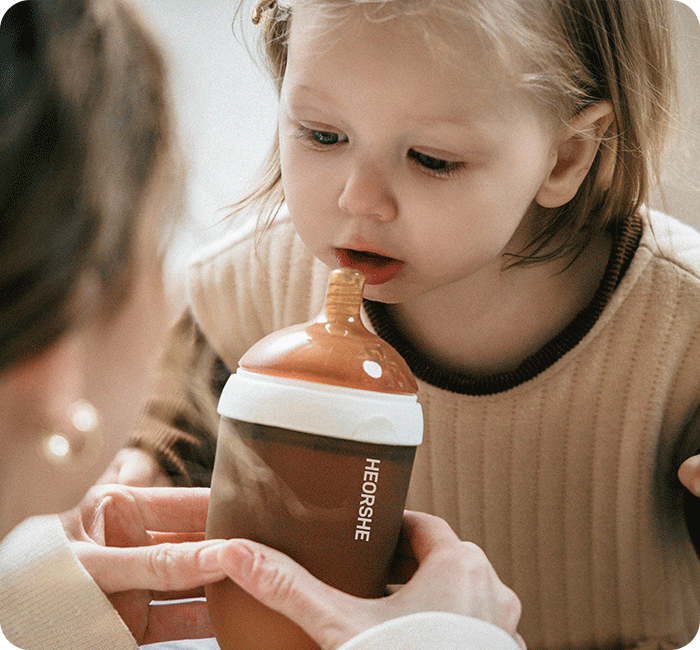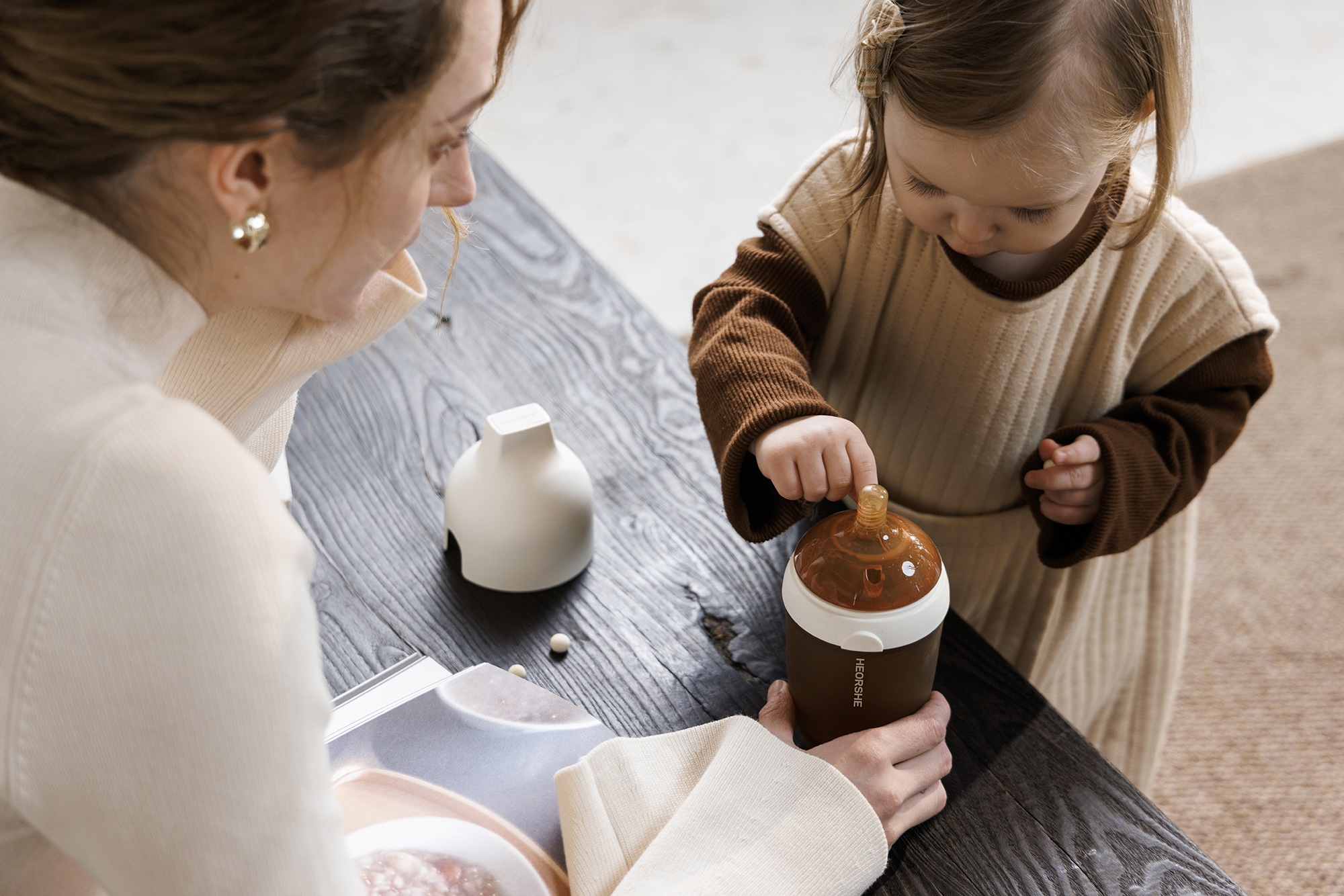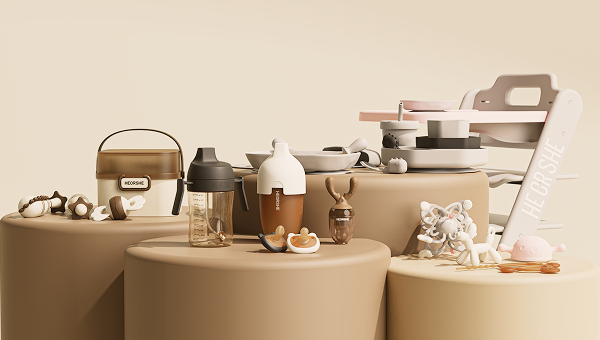For new parents, the journey of caring for a baby is filled with a multitude of decisions, each seemingly more intricate than the last. Among these, understanding the proper care and maintenance of baby bottle nipples can pose a particular challenge. The question, “How often should you change baby bottle nipples?” is more than just a routine query; it’s a critical aspect of ensuring your baby’s safety and well-being. Baby bottle nipples are not just functional components of feeding; they play a vital role in your baby’s comfort and health. Over time, these nipples can wear out or become less effective, making it essential to know when and why to replace them. In this article, we will explore the factors that influence the lifespan of baby bottle nipples, provide guidelines for determining when they need to be replaced, and offer best practices for their maintenance to help you navigate this important aspect of baby care.
The Importance of Baby Bottle Nipples
Baby bottle nipples are far more than mere accessories; they are essential elements in your baby's feeding routine. Designed to replicate the natural breastfeeding experience, these nipples come in a variety of shapes, sizes, and flow rates to meet the evolving needs of infants. Each type of nipple is engineered to deliver milk or formula at a consistent rate, facilitating a smooth and comfortable feeding process.
The importance of baby bottle nipples extends beyond just their immediate functionality. They play a pivotal role in ensuring that your baby receives the right amount of nourishment efficiently. Properly functioning nipples help reduce feeding-related issues such as frustration or excessive air intake, which can lead to gas and colic.
Timely replacement and regular maintenance of these nipples are crucial for maintaining their effectiveness and safeguarding your baby's health. Over time, nipples can deteriorate, leading to potential hazards like choking, leakage, or contamination. By staying vigilant and adhering to recommended replacement schedules, you can help ensure that your baby's feeding experience remains safe, hygienic, and enjoyable.

Factors Influencing the Replacement Frequency
The frequency with which you should replace baby bottle nipples depends on several key factors. Understanding these factors can help you determine the optimal replacement schedule for maintaining your baby’s safety and comfort.
1. Material Degradation
Baby bottle nipples are typically crafted from either silicone or latex, each with its own durability profile. Silicone nipples are generally more resilient and less prone to wear compared to latex nipples. However, both materials can degrade over time due to repeated use, cleaning, and exposure to heat. As nipples age, they may show signs of degradation such as discoloration, increased softness, or a loss of shape. Discoloration often indicates that the nipple has been subjected to high temperatures or has absorbed stains from milk or formula. Softening and loss of shape can affect the nipple's ability to provide a consistent flow, which can impact feeding. If you observe any of these signs, it's advisable to replace the nipple to ensure your baby’s feeding experience remains safe and effective.
2. Wear and Tear
Regular use of baby bottle nipples inevitably leads to wear and tear. Over time, this can result in visible damage such as cracks, tears, or holes. Even minor imperfections can pose significant hazards, including choking risks or milk leakage. Cracks and tears can also harbor bacteria, compromising the hygiene of the nipple. To prevent these issues, inspect the nipples frequently for any signs of physical damage. A thorough inspection after each cleaning or feeding session can help you catch issues early and decide when to replace the nipple.
3. Flow Rate Changes
As infants grow, their feeding needs evolve, and so does their requirement for different nipple flow rates. Nipples come in various flow rates—slow, medium, and fast—to accommodate the developmental stages of a baby’s feeding abilities. Newborns typically start with slow-flow nipples, but as they mature and their feeding efficiency increases, they may need nipples with a faster flow rate. If your baby seems frustrated, struggles to get milk out, or takes excessively long to finish a feeding, it may be time to switch to a nipple with a different flow rate. Monitoring your baby’s feeding behavior can provide valuable insights into whether the current nipple is still appropriate.
4. Cleaning and Sanitizing
Proper cleaning and sanitizing are vital for maintaining the safety and longevity of baby bottle nipples. Frequent cleaning is necessary to remove milk residues and prevent bacterial growth. Despite meticulous cleaning, nipples can still degrade over time due to repeated exposure to hot water, soap, and sanitizing agents. Always adhere to the manufacturer's cleaning instructions to preserve the nipple’s integrity. Even with regular care, replace nipples when they begin to show signs of wear or if cleaning no longer restores their original condition. This proactive approach helps ensure that your baby is always using safe, hygienic equipment.

How Often Should You Change Baby Bottle Nipples?
Knowing how often to replace baby bottle nipples is essential for maintaining a safe and effective feeding routine for your baby. While the general recommendation is to replace nipples every 2-3 months, several factors can influence this timeline. Here’s a detailed look at how often you might need to change baby bottle nipples based on different considerations:
1. Regular Inspections
Routine inspections are vital for ensuring that baby bottle nipples remain in good condition. During each inspection, look for signs of wear and tear such as cracks, tears, or discoloration. These indicators of damage can compromise the nipple’s functionality and safety. For example, cracks or tears can create choking hazards, while discoloration may signal material degradation. Even if you don’t observe visible damage, it’s wise to replace the nipples every 2-3 months as a preventive measure. This proactive approach helps ensure that you’re always using nipples that are in optimal condition.
2. Follow Manufacturer’s Recommendations
Manufacturers often provide specific guidelines regarding the lifespan and replacement frequency of baby bottle nipples. These recommendations can typically be found on the product packaging or the manufacturer’s website. Following these guidelines is crucial, as they are based on the material and design specifications of the nipples. Adhering to the manufacturer’s recommendations helps ensure that you’re using nipples that meet safety and performance standards. Regularly checking these guidelines can help you stay informed about the best practices for maintaining your baby’s feeding equipment.
3. Monitor Your Baby’s Feeding Behavior
Your baby’s feeding behavior can offer valuable insights into the condition and suitability of the bottle nipples. If you notice that your baby seems frustrated during feedings, has difficulty sucking, or takes an unusually long time to finish a bottle, it might indicate that the nipple’s flow rate is no longer appropriate. Babies’ feeding needs change as they grow, and what worked for them a few months ago may not be suitable now. If you observe such issues, consider replacing the nipple with one that better aligns with your baby’s current feeding needs. Monitoring and adjusting based on your baby’s behavior can help ensure a more comfortable and effective feeding experience.
Best Practices for Maintaining Baby Bottle Nipples
Proper maintenance of baby bottle nipples is crucial for ensuring they remain safe, hygienic, and functional. By following these best practices, you can extend the lifespan of the nipples and provide a safe feeding experience for your baby:
1. Regular Cleaning
Thorough cleaning of baby bottle nipples after each use is essential to prevent the buildup of milk residue and bacteria. Use hot, soapy water and a bottle brush to scrub away any milk or formula residues. Pay close attention to the nipple’s crevices, where residue can accumulate. Rinse the nipples thoroughly to remove all soap, as soap residue can affect the nipple's material and potentially harm your baby. Many parents opt to sterilize nipples periodically by boiling them or using a sterilizer to ensure complete sanitization. Always follow the manufacturer’s cleaning and sterilization instructions to avoid damaging the nipples and to maintain their integrity.
2. Inspect Before Use
Before each feeding, it’s important to inspect the baby bottle nipples for any signs of damage or wear. Check for cracks, tears, or any irregularities that could affect the nipple’s functionality or pose a choking hazard. Ensure that the nipple is securely attached to the bottle and that there are no visible defects. Even small imperfections can compromise safety, so replace any damaged nipples immediately to prevent potential risks.
3. Avoid High Temperatures
Exposure to high temperatures can accelerate the degradation of baby bottle nipples. When using a dishwasher for cleaning, place the nipples on the top rack where the heat is less intense to minimize material damage. Avoid exposing nipples to prolonged high heat, such as boiling, unless specifically recommended by the manufacturer for sterilization. Excessive heat can cause the nipples to become soft, discolored, or misshapen, affecting their performance and safety.
4. Store Properly
Proper storage of baby bottle nipples is key to maintaining their condition. Store nipples in a clean, dry place to prevent contamination. Avoid keeping them in direct sunlight or in extreme temperatures, as these conditions can degrade the nipple material over time. Use a designated container to keep nipples clean and protected when not in use. Proper storage helps ensure that the nipples remain in good condition and are ready for safe use during feeding.
Signs That It’s Time to Replace Baby Bottle Nipples
Identifying when to replace baby bottle nipples is essential for ensuring your baby's safety and maintaining a comfortable feeding experience. Here are some key signs that indicate it’s time to replace the nipples:
1. Cracks or Tears
Cracks or tears in a baby bottle nipple are significant warning signs that the nipple needs to be replaced immediately. These imperfections can create choking hazards if small pieces break off or if the nipple fails to deliver milk properly. Additionally, cracks and tears can lead to leaks, which not only create messes but also indicate that the nipple is no longer functioning as intended. Regularly inspect the nipples for any visible damage and replace them if you find any cracks or tears to ensure your baby’s safety.
2. Discoloration
Discoloration of baby bottle nipples is another important sign that they may need replacing. Over time, nipples can become stained or change color due to exposure to milk, formula, or even the cleaning agents used. This change in color can be a sign of material degradation, which can affect the nipple’s safety and functionality. If you notice that the nipple has become discolored or appears stained despite thorough cleaning, it’s time to replace it. Discoloration can indicate that the nipple is breaking down and may no longer be safe for use.
3. Softening
Nipples should maintain their shape and firmness to ensure a consistent feeding experience. If a nipple becomes unusually soft or loses its original shape, it is a sign that the material is deteriorating. Softening can affect the nipple’s ability to provide the correct flow of milk or formula, and it may become less effective in mimicking the natural breastfeeding experience. If you notice that the nipple has become too soft or misshapen, replace it with a new one to ensure your baby continues to have a comfortable and effective feeding experience.
4. Change in Flow Rate
The flow rate of a nipple is crucial for meeting your baby’s feeding needs. Nipples are designed with various flow rates to accommodate different stages of infant development. If you observe that the nipple’s flow rate has become inconsistent, too slow, or too fast for your baby’s current needs, it may be time to replace it. An incorrect flow rate can lead to frustration during feeding, inadequate nourishment, or even choking hazards. Consider replacing the nipple with one that better matches your baby’s feeding requirements to ensure a smooth and comfortable feeding experience.
By being attentive to these signs—cracks or tears, discoloration, softening, and changes in flow rate—you can make timely decisions about replacing baby bottle nipples and maintain a safe, effective feeding routine for your baby.

Eco-Friendly Considerations
For environmentally-conscious parents, considering eco-friendly options for baby bottle nipples can be an important factor. Look for nipples made from sustainable materials and those that are recyclable or biodegradable. Regular maintenance and timely replacement can also contribute to reducing waste and ensuring that you’re using safe, functional products for your baby.
Conclusion
Knowing how often to change baby bottle nipples is crucial for ensuring your baby's safety and comfort. Regular inspection, adherence to manufacturer guidelines, and attention to your baby’s feeding behavior can help you determine the right time for replacement. By following best practices for cleaning and maintenance, you can extend the lifespan of baby bottle nipples and ensure that they remain safe and effective for your baby’s needs.
Remember, the general recommendation is to replace baby bottle nipples every 2-3 months, but always be vigilant for signs of wear and tear. By staying attentive to the condition of the nipples and your baby’s feeding needs, you can provide a safe and enjoyable feeding experience for your little one.


